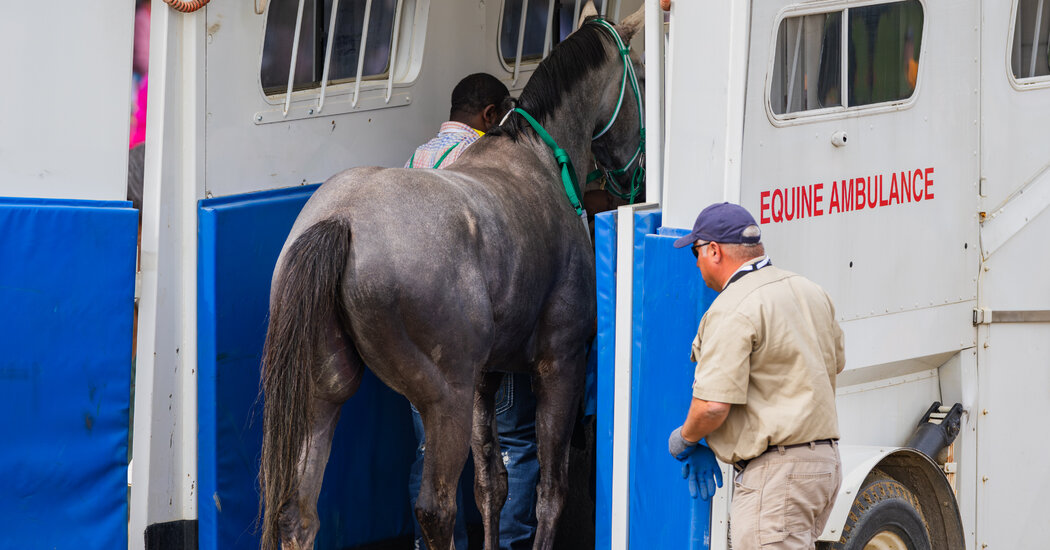PGA Tour Board Meets as Scrutiny of Saudi Deal Swells
The PGA Tour’s board, with its members gathered in the same room for the first time since a fraction of them negotiated a deal with Saudi Arabia’s sovereign wealth fund to reshape golf, signaled Tuesday that it intended to move ahead with the agreement and past an outcry that has stretched from clubhouse locker rooms to Capitol Hill.
But it also made plain that closing the deal was no certainty.
The board, as expected, did not vote on a deal stocked with tentative terms that call for a web of golf businesses — including the tour, the Saudi-backed LIV Golf circuit and the European Tour, now known as the DP World Tour — to be housed in a new company. The entity is expected to be flush with Saudi cash but, for now, under the day-to-day control of PGA Tour leaders. But executives hoped that the regular meeting of the board, which is expected to weigh the pact formally only once final terms are negotiated, would help stabilize the tour’s course during a turbulent run of internal division and global scrutiny.
That period, executives and board members know, could last for months.
Tour executives, the board said in a carefully worded statement Tuesday night, have “begun a new phase of negotiations to determine if the tour can reach a definitive agreement that is in the best of interests of our players, fans, sponsors, partners, and the game overall.”
The board, wary of further alienating the players who make up the tour’s membership, some of whom were infuriated after being blindsided by news of the pact, said it was “committed to the safeguards in the framework agreement that ensure the PGA Tour would lead and maintain control of this potential new commercial entity.”
The board’s meeting came three weeks after the surprise announcement of the deal, and one day after the tour gave a Senate subcommittee a copy of the five-page framework agreement. The tentative accord, signed in the early-morning hours of May 30 at a Four Seasons hotel in San Francisco, capped seven weeks of secret negotiations, but it was mostly notable for how few binding commitments it included — and how many consequential details remained to be sorted through.
Although the tour and the wealth fund are expected to contribute their golf ventures, like LIV, into the new company, the deal’s architects signed the framework agreement so quickly that no valuations were included or, apparently, even completed in advance. The agreement does not quantify the scale of the wealth fund’s expected investment in the new company, though it offers an outline for its leadership structure and protects the Saudi fund’s investment rights.
Its few binding clauses include a nondisparagement pledge covering the tour and the wealth fund (but not the players) and a truce that keeps the rival circuits from recruiting golfers from one another. If a final agreement is not in place by the end of the year, barring a mutual extension, the tour and the wealth fund can “revert” to their businesses without any financial penalty, like a breakup fee.
Board approval, if it comes, does not guarantee that the deal will last. The Justice Department’s antitrust regulators are among the government officials examining the accord, and they could ultimately try to block it. The pact is also poised to draw scrutiny next month on Capitol Hill, where a Senate subcommittee has scheduled a hearing for July 11.
But Tuesday’s meeting was seen as pivotal to the way forward for the tour and an 11-member board that includes five players and luminaries in business, law and finance. Only two members of the board, Edward D. Herlihy and James J. Dunne III, were involved in the negotiations that led to the deal, and it appears many board members did not know they were underway.
The board meeting, held at a Detroit-area hotel, began in the early afternoon and stretched into the evening. A person familiar with the meeting, who spoke on the condition of anonymity to describe a private gathering, said it had not focused entirely on the deal; rather, the person said, the board also spent significant time on more technical matters of the sport, such as competition cuts and eligibility.
The majority of the meeting focused on the framework agreement, though, with board members receiving a briefing from the tour’s bankers about how they will try to assign values to the circuit’s varied assets. Jay Monahan, the PGA Tour commissioner, was absent from the meeting in Dearborn; on June 13, the tour announced that he was going on leave as he recuperated from an unspecified “medical situation.”
Board members did not comment as they left the meeting, allowing the statement to stand on its own. Only one player who sits on the board, Rory McIlroy, has publicly suggested any measure of support for the deal. In recent weeks, other players have said they wanted to learn more about the accord and what it would mean for the tour.
But board members have been told in recent months that the tour could not afford to maintain its duel with LIV, the league founded with billions of dollars from the Saudi wealth fund that enticed some of the game’s biggest stars with guaranteed contracts and enormous prize money. The wealth fund was also facing some pressure as it confronted setbacks in a court battle against the tour, and as LIV struggled to attract audiences and attention in the United States for reasons beyond its financial backer.
If the deal collapses, though, both sides have already secured a mutual victory: the dismissal of litigation in California after the tour, the wealth fund and LIV agreed to drop their clashing cases. The dismissals were made with prejudice, meaning that they cannot be refiled, even if the rest of the pact disintegrates.
For as guarded as the tour’s statement was on Tuesday night, the dismissal of the litigation was mentioned in its very first sentence.


